
PREV ARTICLE
NEXT ARTICLE
FULL ISSUE
PREV FULL ISSUE
COPPERHEAD TOKENS OF THE CIVIL WARBill Groom submitted this article on Copperhead Tokens of the Civil War. Thanks! -Editor During the Civil War era, northern Democrats who sought to make peace with the Confederacy, take the “live and let live” position were deemed Copperheads by the Republicans. These more extremist Democrats were likened to the venomous copperhead snakes. The below, patriotic Civil War token (Fuld 136/397a) was an anti-Copperhead piece ... 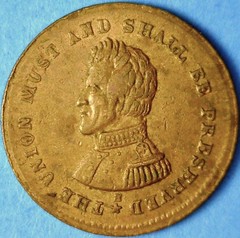 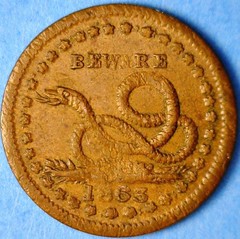 Many of the so-called Copperhead Democrats openly flaunted their political position by adopting and wearing a Copperhead badge. The badge was nothing more than a cut-down, miniaturized large cent. The obverse stars and reverse legend, United States of America, were removed. The obverse Liberty head was displayed, and a pin was typically soldered to the reverse. The Copperheads were a distinct minority and largely reviled. Rather than invite assault, many of them took to carrying this symbolic token as a pocket piece to share with fellow Copperheads. Below are shown a few examples … 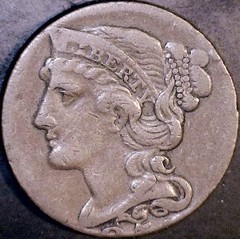 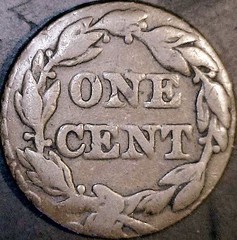 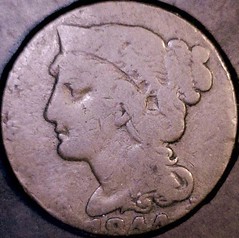 Here's a contemporary newspaper article about the “Copperhead” badge ... Wednesday, March 18, 1863 The young Democrats of Syracuse have adopted a “Copperhead” badge. It is made by procuring one of the large United States copper cents, and neatly removing the head of the “Goddess of Liberty.” To this is affixed a pin, which fastens to the lapel of the coat, or any other conspicuous place on the wearer where he chooses to display it. Judging from the below newspaper article, it appears that the Copperhead badges took root in Connecticut. The article ends, saying they “are worn without shame” ... April 17, 1863 A NEW EMBLEM OF TREASON. While General Wool and staff, on their recent trip to Connecticut, were awaiting in Bridgeport the arrival of a train, a copperhead; adherent of Seymour showed the symbol of his tribe (a badge) in the presence, of the General. The copperhead badge is the head of an old copper cent cut out from the body of the coin, and attached to a pin, so that it can be fastened as an emblem on the coat or vest of the wearer. The General regarded the man for a moment, with an expression of scorn upon his face, and said "such men ought not to be at large in our midst — you are a traitor.” The veteran soldier then turned away from the man he had so signally rebuked; but we do not learn that the copperhead exhibited the slightest sensitiveness in regard to his position. The manufacture of the copperhead emblems we have described is regularly carried on in Connecticut, and they have been adopted by the Seymour party as the token of their principles. Large numbers of them are sold, and they are worn without shame. An “I told you so” appeared in a Republican newspaper some months later … COPPERHEAD. The editor of the Advance don't like to be called a copperhead. It is less than a year since that concern advised its friends to put on the copperhead badge and wear it. Our opinion at that time was that it would be ashamed of itself before the year was ended. On Tuesday the people will bury the whole copperhead fraternity past resurrection. The wearing of the Copperhead badges seems to have peaked during 1863. General Grant's victory at Vicksburg during the summer of that year turned the tide of the war. The Union cause was bolstered, and the argument of the Copperheads was much diminished. These little copper badges increasingly caused public turmoil, as evidenced by the below newspaper account, following the Vicksburg victory. COPPERHEADS CLEANED OUT AT MT. VERNON, IOWA The Muscatine (Iowa) Journal says there was an exciting time at the anniversary exercises of Cornell College, at Mt. Vernon, on the 28th. It seems that about a dozen persons from Marion appeared in the crowd with Copperhead pins. About two thousand persons were present, the exercises being held in a grove. On the appearance of the secesh emblems, business was suspended by the tumult, and every Copperhead badge was hastily taken from its owner and he forced to hurrah for the Union. A gray-headed traitor, who has long been blatant for the Southern Confederacy, declared that he would not hurrah for the Union, but a little choking brought him to terms. One young woman had on the southern badge, which was torn from her breast, clothes and all, by another young woman. The latter bad her bonnet destroyed in capturing the pin, and some young men raised eight or ten dollars in order to replace the bonnet. The Copperhead pins being all "cleaned out," the exercises were resumed, and passed off very satisfactorily. RETURNED SOIDIERS PUNISH A COPPERHEAD An exciting affair took place last evening at Shunpike, a small station on the Central road, a short distance west of Auburn. When the train containing the 26th regiment reached there, the station keeper made his appearance wearing a copperhead badge on his coat, in plain sight. This disloyal exhibition incensed the soldiers, and in less time than we are relating the occurrence, the odious emblem was torn off. The station keeper, allowing his zeal in a bad cause to out-do his discretion, got very mad, and starting for his house, declared that he would get his pistol and shoot his assailants. Upon this some two hundred of the soldiers surrounded the house, smashed in the windows and doors and nearly destroyed the structure. They would have severely handled the misguided copperhead himself, if he had not made haste to escape by a back door. The conductor of the train, upon hearing of the occurrence, hurried up the departure of the train. The copperheads will learn speedily that the soldiers look upon them as no better than rebels in arms, and woe be to them it they do not keep their unpatriotic feelings within due bounds. — Syracuse Journal Might the below cents have been whimsically fashioned by Copperheads? No way of telling, but they may well have been. The one on the top is crude, whereas the one on the bottom was skillfully machined in the shape of a nut … a contrarian political statement, perhaps? 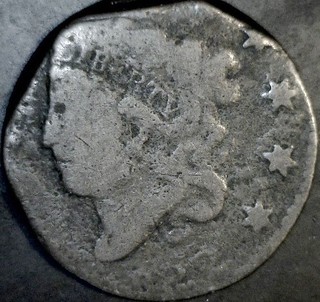 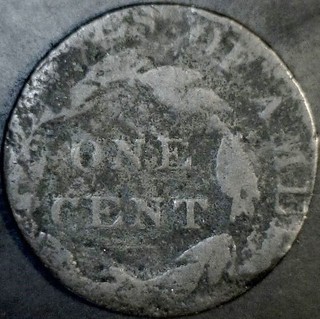 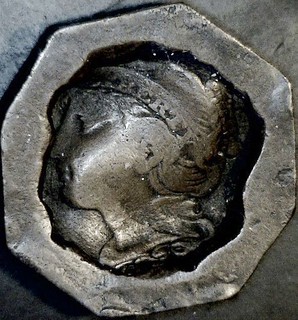 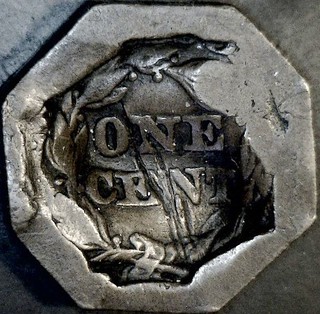 These Copperhead tokens don't command much attention from die-hard collectors of Civil War tokens, yet it's clear that these pieces have no less of a story to tell about that era. Indeed, one of these would fit comfortably within a display of pacifist Civil War tokens, would it not? 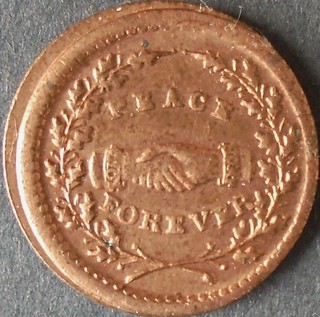 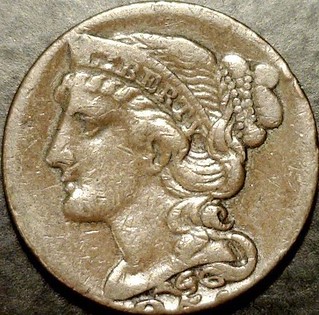 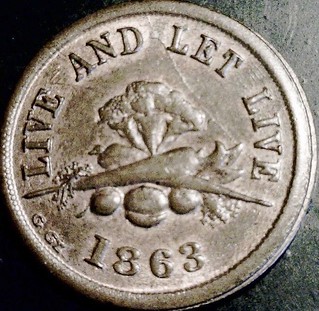 To read the earlier E-Sylum article, see:
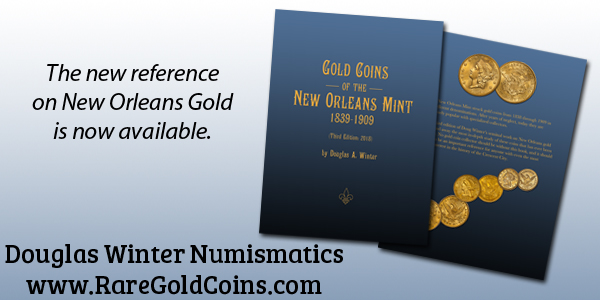 Wayne Homren, Editor The Numismatic Bibliomania Society is a non-profit organization promoting numismatic literature. See our web site at coinbooks.org. To submit items for publication in The E-Sylum, write to the Editor at this address: whomren@gmail.com To subscribe go to: https://my.binhost.com/lists/listinfo/esylum All Rights Reserved. NBS Home Page Contact the NBS webmaster 
|